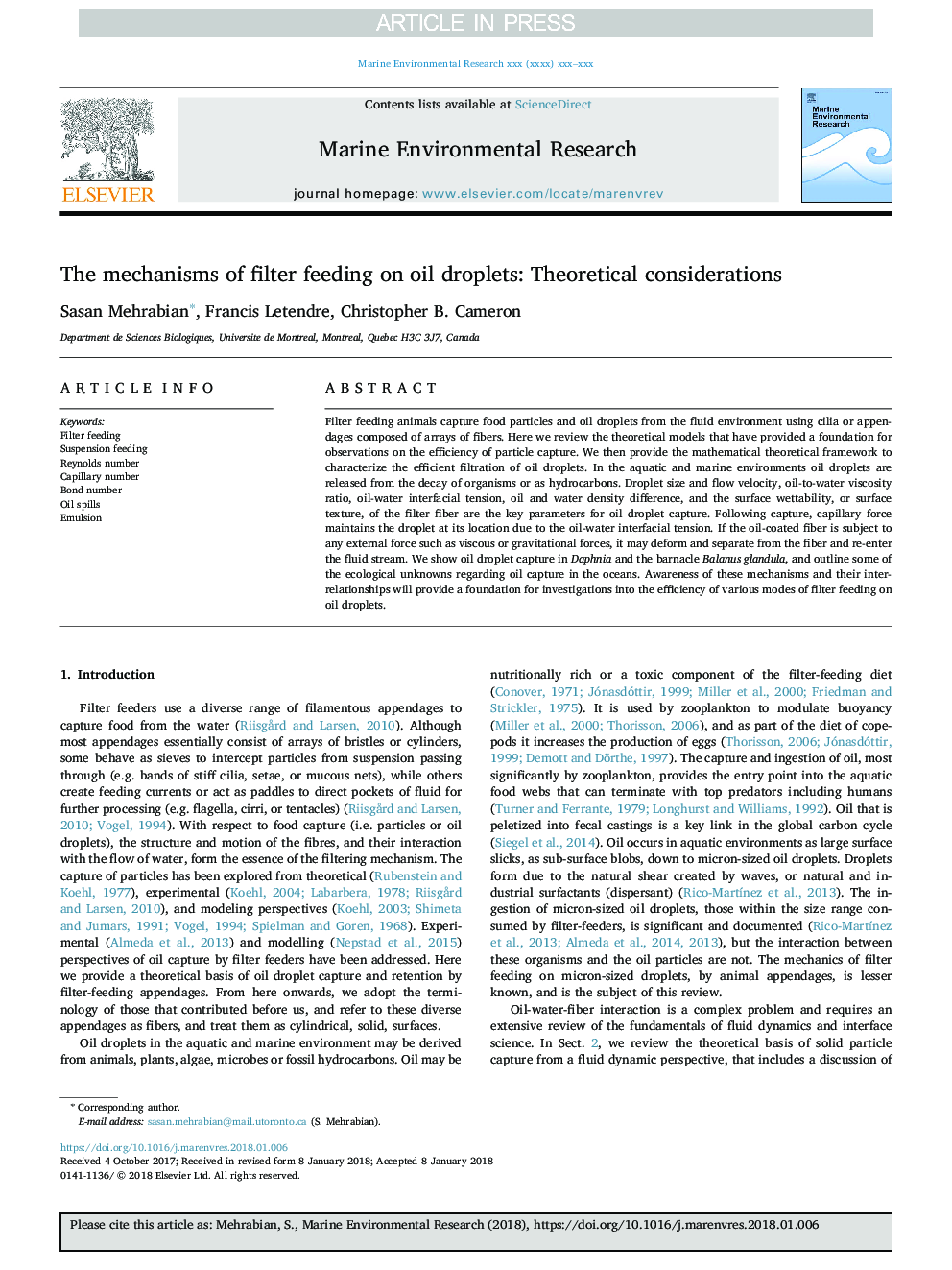| Article ID | Journal | Published Year | Pages | File Type |
|---|---|---|---|---|
| 8886355 | Marine Environmental Research | 2018 | 14 Pages |
Abstract
Filter feeding animals capture food particles and oil droplets from the fluid environment using cilia or appendages composed of arrays of fibers. Here we review the theoretical models that have provided a foundation for observations on the efficiency of particle capture. We then provide the mathematical theoretical framework to characterize the efficient filtration of oil droplets. In the aquatic and marine environments oil droplets are released from the decay of organisms or as hydrocarbons. Droplet size and flow velocity, oil-to-water viscosity ratio, oil-water interfacial tension, oil and water density difference, and the surface wettability, or surface texture, of the filter fiber are the key parameters for oil droplet capture. Following capture, capillary force maintains the droplet at its location due to the oil-water interfacial tension. If the oil-coated fiber is subject to any external force such as viscous or gravitational forces, it may deform and separate from the fiber and re-enter the fluid stream. We show oil droplet capture in Daphnia and the barnacle Balanus glandula, and outline some of the ecological unknowns regarding oil capture in the oceans. Awareness of these mechanisms and their interrelationships will provide a foundation for investigations into the efficiency of various modes of filter feeding on oil droplets.
Keywords
Related Topics
Physical Sciences and Engineering
Earth and Planetary Sciences
Oceanography
Authors
Sasan Mehrabian, Francis Letendre, Christopher B. Cameron,
